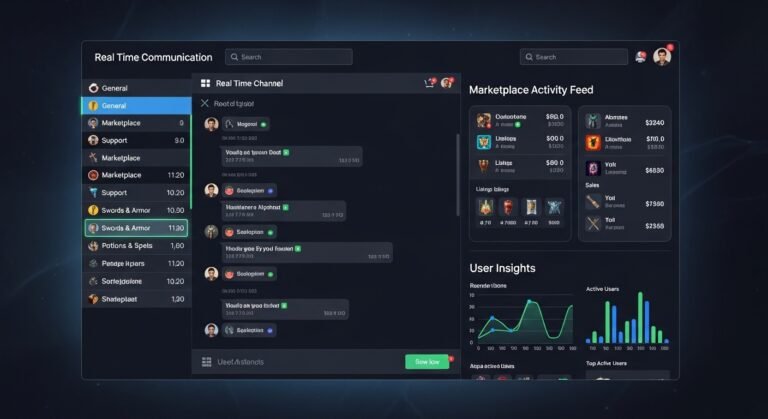Artificial intelligence has transformed how we look at safety and monitoring. From crowded public areas to private business facilities, AI is reshaping the way surveillance systems function. At the center of this transformation is video annotation for AI surveillance, a process that trains computer vision models to recognize and interpret moving objects in real-world environments. By breaking down complex video footage into labeled data, annotation helps AI learn how to detect unusual activity, track individuals, and alert security teams in real time.Why Video Annotation Matters in Security
Traditional surveillance depends heavily on human attention. A person can only monitor so many screens at once, which often leads to missed details. AI systems, on the other hand, can analyze hours of footage without fatigue. Still, these systems need structured training data to work effectively. This is where video annotation in security systems becomes essential. By tagging objects, people, and actions within video clips, AI models learn to identify suspicious activity with precision. The more accurately the data is labeled, the better these models perform in real-world conditions.The Role of AI-Powered Monitoring
With AI-powered video monitoring, surveillance systems are no longer passive. Instead of just recording what happens, they actively interpret and respond to events. For example, AI can alert security teams when it spots someone entering a restricted zone, detect unattended bags in airports, or recognize unusual crowd movements during large events. These smart systems rely on annotated training data that allows them to distinguish between normal and abnormal activity. This makes AI a valuable partner in preventing security breaches and responding quickly when threats arise.
Video Labeling for Object Tracking
One of the most critical aspects of training surveillance AI is video labeling for object tracking. This involves marking the movement of objects across video frames so the AI can learn how to follow them consistently. In practical terms, it means teaching the system to recognize a person walking through a building, a vehicle moving across a parking lot, or even an item being left unattended. By understanding how objects behave over time, AI models become highly effective at monitoring situations that could pose risks.
Computer Vision in Modern Surveillance
The success of AI in surveillance depends heavily on computer vision. This branch of AI allows machines to process and interpret visual information from cameras. Through segmentation, detection, and classification, computer vision systems can analyze complex scenes with remarkable accuracy. For instance, they can differentiate between a worker in uniform and an unauthorized person in a facility. In city surveillance, computer vision helps track traffic patterns, detect accidents, and manage public safety. These capabilities are built on annotated datasets that give machines the context they need to make reliable decisions.
Benefits of Video Annotation for Security Applications
The advantages of annotated video data extend beyond basic monitoring. Security teams benefit from improved response times, reduced workload, and fewer false alarms. With accurate annotations, AI can filter out irrelevant details such as shadows or background noise, focusing only on meaningful events. In addition, systems trained with annotated data adapt to different environments, whether it is a retail store, an airport, or a government building. By automating the detection of threats, AI allows human security personnel to concentrate on decision-making rather than routine observation.
Challenges in Annotating Video Data
Despite its benefits, video annotation comes with challenges. Security footage often contains moving objects, changing lighting, and crowded scenes that make annotation complex. Ensuring accuracy in such conditions requires skilled annotators and advanced tools. Privacy concerns also play a role, since surveillance footage may capture sensitive information. Organizations must balance the need for security with ethical considerations around data use. Many turn to professional providers to ensure that datasets are prepared securely, accurately, and in compliance with privacy regulations.
Human-in-the-Loop Approach in Security AI
Even with automation, human involvement remains critical. Annotators review and refine labeled data to minimize errors. They also provide feedback that helps AI models adapt to new environments. For instance, if a system misidentifies a reflection as a person, human intervention ensures the dataset is corrected. This collaborative approach enhances accuracy and makes surveillance AI more reliable over time.
Industry Adoption and Market Insights
The use of video annotation is expanding quickly as organizations recognize its value in preventing risks. From retail loss prevention to border security, industries are investing heavily in computer vision solutions. A market research consulting company in the USA often helps businesses assess market demand and identify the most cost-effective strategies for adopting AI-based surveillance. These insights guide decision-making and highlight areas where video annotation can deliver the greatest impact.
The Future of Video Annotation in Security
As AI technology advances, the role of video annotation will continue to grow. Future systems may integrate predictive analytics, allowing them not only to detect threats but also to anticipate them. With real-time analysis becoming more sophisticated, surveillance systems will provide even stronger protection in public and private spaces. The combination of advanced annotation methods, powerful computer vision algorithms, and human oversight will shape the next generation of security solutions.
Conclusion
The power of AI in security is built on the foundation of accurate data. While challenges remain, the growing adoption of video annotation in security systems shows its critical role in modern safety strategies.
Meanwhile, if you’re looking for annotation of images in the USA, we have you covered! At Akademos, we believe in building solutions that make technology truly valuable. Our team works with organizations to deliver meaningful results that address real challenges. If you are ready to strengthen your projects with expert guidance and reliable support, reach out to Akademos today. Together, we can create pathways that drive success and long-term impact.





